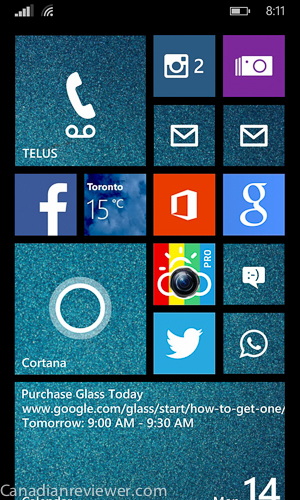 By Gadjo Cardenas Sevilla
By Gadjo Cardenas Sevilla
Windows Phone 8.1 was released yesterday to developers but anyone can install it. The update is the biggest and most impressive refresh to Microsoft's mobile OS since its inception and one that brings various features and tweaks that propel Windows Phone forward as a viable and modern smartphone OS.
I installed Windows Phone 8.1 on my trusty Lumia 1020 and while the installation took around 40 minutes, it also became apparent that despite the '.1' designation, this is a major update.
 One of the most important aspects of 8.1 is Action Center which is a centralized notification center that, much like iOS and Android, is accessed by swiping down from the top of the screen.
One of the most important aspects of 8.1 is Action Center which is a centralized notification center that, much like iOS and Android, is accessed by swiping down from the top of the screen.
This 'window blind,' a paradigm that makes sense to users and smartphones because of the portrait-style orientation of these displays, brings quick access to notifications and the most important toggles or controls.
Before Action Center, accessing individual updates or getting to the settings menu was a painful and multi-step process. This is much better and it works great.
Action Center makes it possible to quickly triage and address email, messaging and even app notifications with a few key presses and it almost eliminates the need to go back to the homescreen, choose an app, get into the app and then read or delete a message.
The Lumia 1020 seems to manage Windows Phone 8.1 well, although the update is supposed to be designed for up to quad core devices and even dual-SIM smartphones, a sign that Microsoft is looking forward to what users around the world might need.
The best feature of Action Center for me is the ability to get rid of all the notifications in one fell swipe, something that's not possible with iOS 7.
8.1 also includes an improved keyboard with a Word Flow function. As a SwiftKey user on Android, I found Word Flow to work pretty much the same.
Simply swipe across words instead of typing and the word is predicted. I found this to be sufficiently accurate and quite delightful to use.
Cortana, which is Windows Phone's spanking new Intelligent Personal Assistant is only available in the US, but I simply changed location settings in order to activate it on my developer beta. Cortana is a cross between Siri and Google Now, it relies on Bing Search to scour the Internet but it is also constantly learning what users want or need.
My relationship with Personal Assistants is that I don't really use them a whole lot. Even the Moto X's always-on feature was rarely my go-to search function. Like many users, speaking to a smartphone still doesn't feel natural but it is convenient nonetheless.


Cortana seems to understand this and allows both voice and text input and responds accordingly. If you talk to her, she will talk back but if you simpy run a search, you will get search results.
Microsoft has come late to this party but it has had ample time to study what the competition is doing and also figure out what works best for users of Windows Phone. Cortana isn't just an app or a feature, it is interweaved into the OS and because of this it feels more like an AI (artificial intelligence).

It has a Notebook Feature that it uses to collect and record information for future use and it also tracks usage and interests, which is helpful. Cortana is designed for setting alarms, scheduling appointments, alerts for upcoming flights, weather, navigating directions, dictating messages, opening apps and adjusting settings plus users' dining preferences, travel needs, daily routine and particular news stories you're keeping track of and events. I also noticed that the Calendar App has been updated which is great.
I've only had Windows Phone 8.1 for less than a day, so it is too early to jump into conclusions. I do feel that the latest set of features and refinements do plug a lot of holes that made earlier versions feel lacking. With updated hardware (hopefully some of which we will see in Canada) and a more refined and modern user experience, it looks like Windows Phone 8.1 has what it takes to maintain its place as third option for smartphone users.